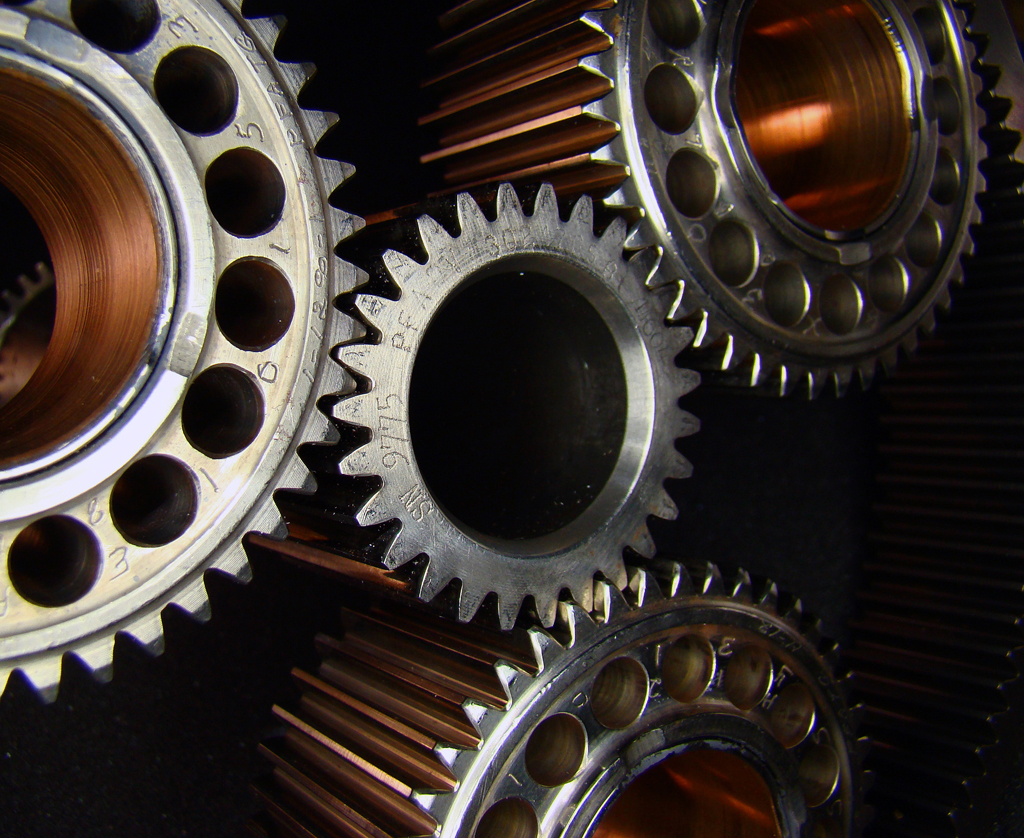ME100 Basics of Mechanical Engineering Module 4 :'Gears and Gear Drives'
- — A gear is a toothed member.
- It is designed to transmit motion and thus power to another toothed member by successively engaging its teeth with those of the other gear
- The teeth may be cut on cylindrical or conical or rectangular or elliptical blocks.
- The tooth shape and sizes of gears are standardized.
- The gears may be manufactured from metallic or nonmetallic materials.
- The metallic gears with cut teeth are commercially obtainable in cast iron, steel and bronze.
The main types of gears are as follows
- — Spur Gear
- — Helical gear
- — Herringbone gears
- — Bevel Gears
- Worm Gears
- Rack and pinion Gears
- These are drives which transmit motion and thus power from one shaft to another with the help of gears when the distance between them is relatively small.
- The axes of the shafts may be parallel, non-parallel or intersecting.
- These are positive drives.
- They transmit power at a constant speed ratio
- It is a positive smooth drive
- — Operation is smooth and service is reliable.
- —Transmit comparatively more power
- Transmit power in any desired direction
- Gear wheels are interchangeable except Bevel gears
- — Not suitable for large center distance because the drive becomes bulky
- Production cost is high and efficiency is less
- — Needs lubrication, hence maintenance cost is there.






![S5 Syllabus Aeronautical Engineering [AOE S5] S5 Syllabus Aeronautical Engineering [AOE S5]](https://blogger.googleusercontent.com/img/b/R29vZ2xl/AVvXsEj2PPLWdDR9V5Z2HtJBkvr_sxzDh16IIx5rUNdYM5FdEc-2ERhjZiflLQzu-fJiee6Sh4wEC6iuqCfSghIReGoIb_qpTRiaNYA2Pidfq4tjfK-ojZdelYnPSR021Udp7OE0WmEJCxCe-QmF/s72-c/Aeronautical+Engineering.jpg)
![Module 1 Note-CS206 [JAVA] Object Oriented Design and Programming Module 1 Note-CS206 [JAVA] Object Oriented Design and Programming](https://blogger.googleusercontent.com/img/b/R29vZ2xl/AVvXsEhto9xQpDo57Fp5Pyu1RbyrWS-v3odTZBqAgqwatxPPWdEpGvZoVgAyYsFCQP-anjVJIh-ULan9v8p9MliBS7Hc1H9RydwDzVZgWxyBGk_vCNLDDG9MeyfDQiFl9zzUTwXD7EPv8KSIhO0/s72-c/KTU+CS206+Java+Note+module1.jpg)

![Model Question Paper:Thermal Engineering [ME204]](https://blogger.googleusercontent.com/img/b/R29vZ2xl/AVvXsEiiWfMso0XIgfl1apSV-U0P4cml_X8Vfk0IkEP39mbVXHduoI7-t0d1MFRJeWM-EqmMCghc4fC31DsLJgoa7gxsLbAJK-hyOCY7rOyMzCEAl-CY8soMnuRoU6lPo1ncUAQX0mkz7zIHw6s/s72-c/ktu+Thermal+Engineering+%255BME204%255D.jpg)







No comments: